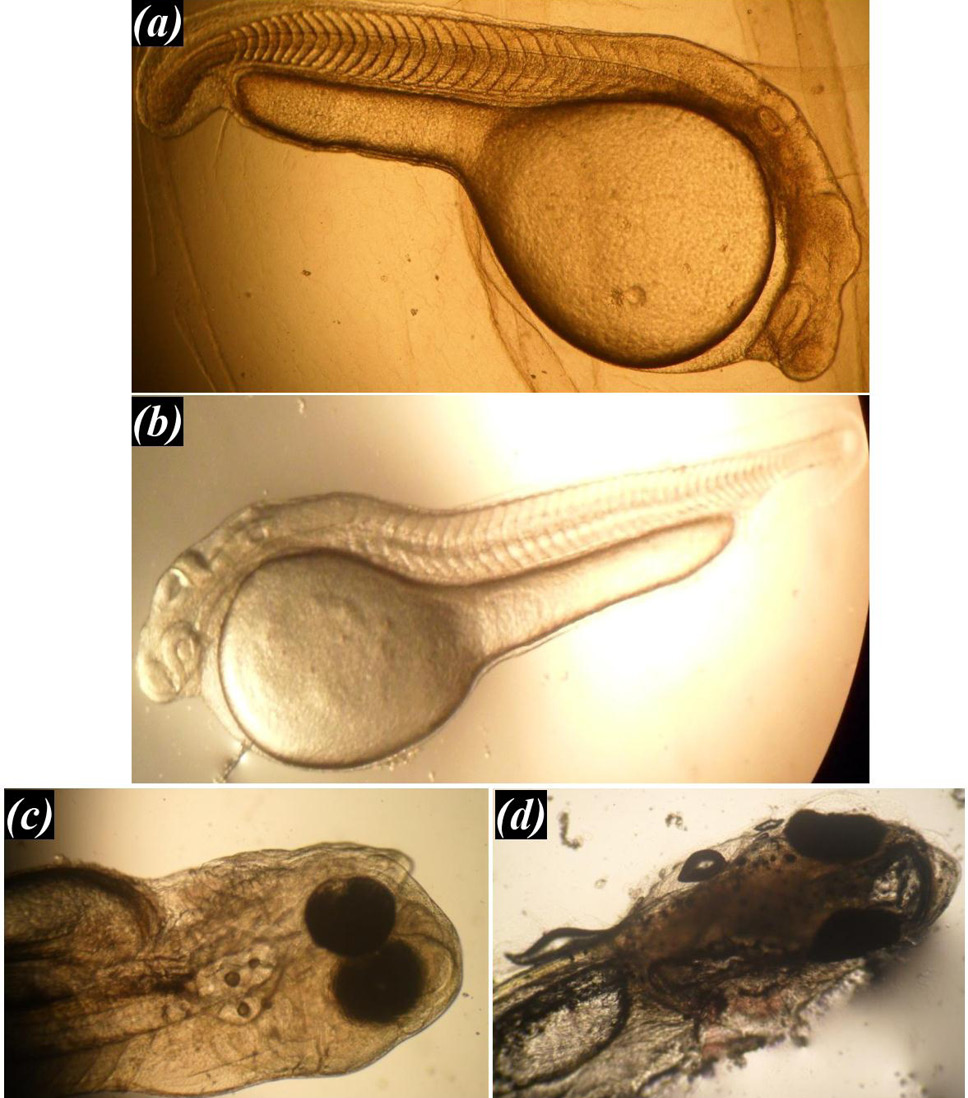Impact of Temperature Variations on Breeding Behavior of Cirrhinus mrigala during Induced Spawning
Impact of Temperature Variations on Breeding Behavior of Cirrhinus mrigala during Induced Spawning
Saeed Akram Khan1, Shahid Sherzada1*, Muhammad Ashraf1, Durr-e-Shehwar1, Sonia Iqbal1, Usman Atique1,3, Farzana Abbas1, Sohail Ahmad2 and Muhammad Sultan Haider4
Temperature dependent developmental stages of Cirrhinus mrigala. (a) blastodisc stage observed at 26 ºC, (b) blastodisc stage observed at 29 ºC, (c) blastodisc stage observed at 32 ºC, (d) blastodisc stage observed at 34 ºC, (e) fertilized egg at 29 oC, (f) denatured fertilized egg at 34 oC, (g) morula stage at 26 oC, (h) morula stage at 29 oC, (i) late morula stage at 29 ºC, (j) late morula stage at 34 oC, (k) yolk plug stage at 29 ºC¸ (l) yolk plug stage at 32 ºC.
Process of eggshell thinning in Cirrhinus mrigala (a) premature hatchling, (b) normal hatchling, (c) normal fry reared at 29 ºC, (d) denatured fry reared at 34 ºC.











